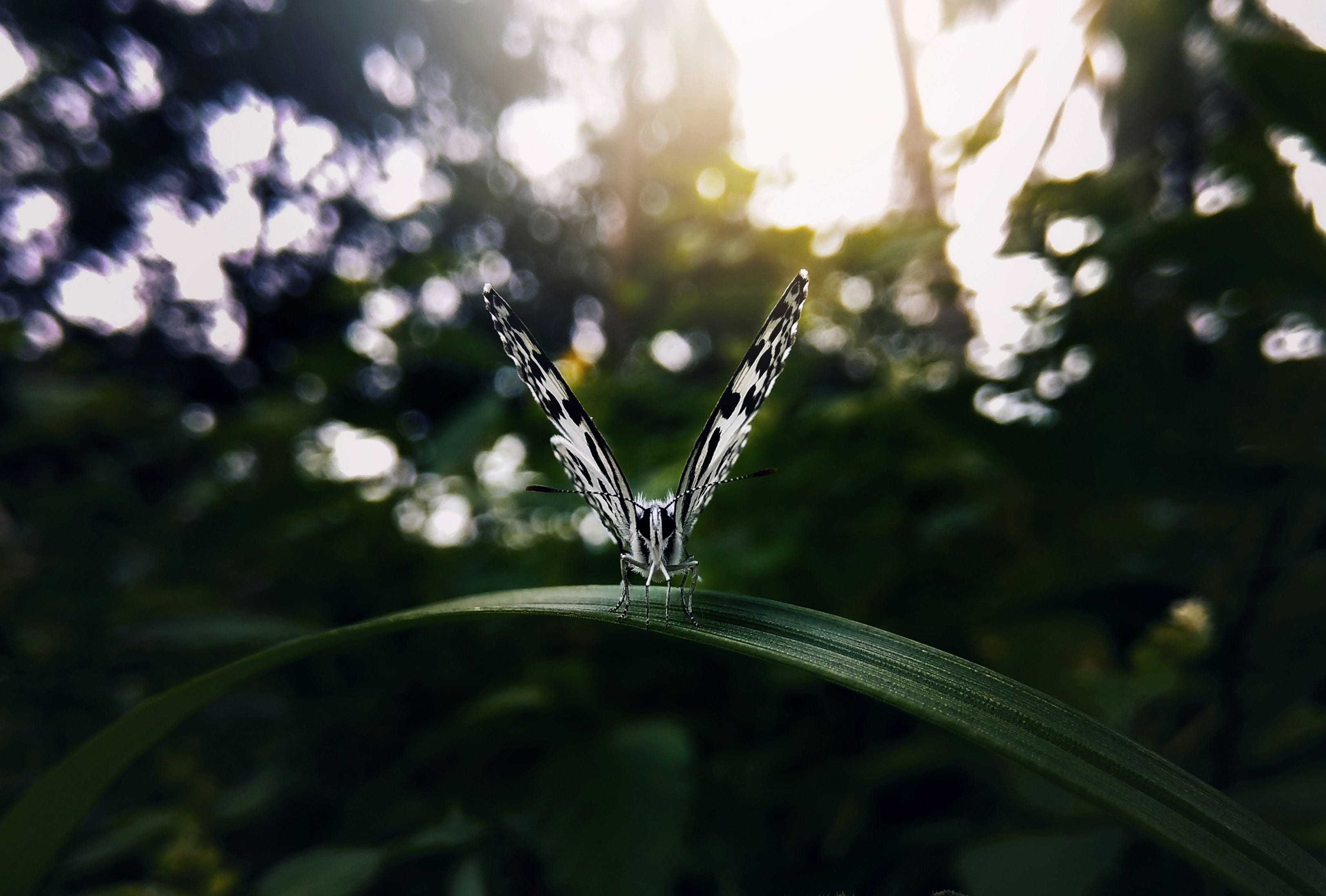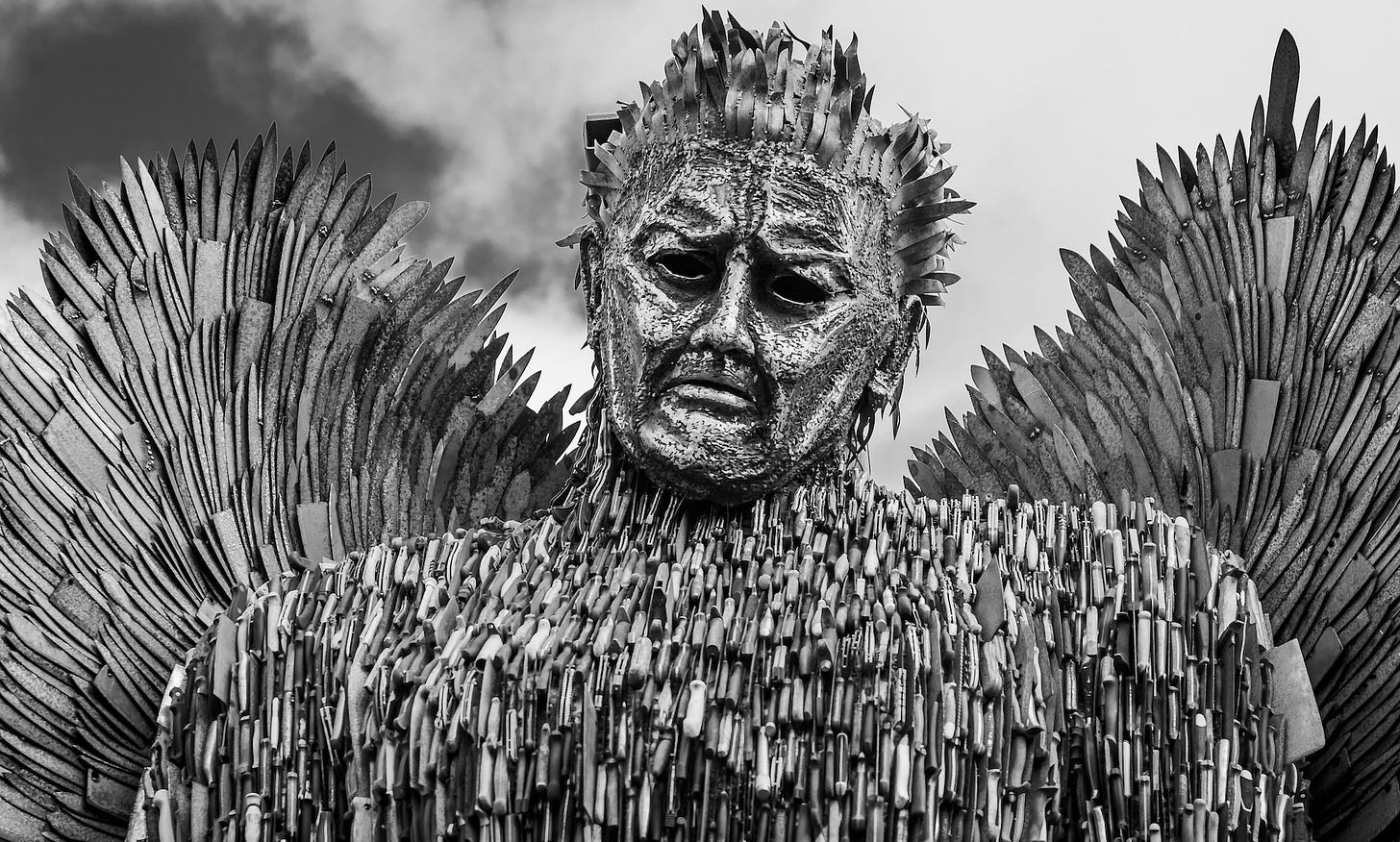Mind's underground moths
grow filmy wings
and take a farewell flight
in the sunset sky.
The burden of self is lightened
when I laugh at myself.
〰 Rabindranath Tagore 〰
Ambiferous
The burden which is well borne becomes light.
〰 Ovid 〰
This week I have been busy with visitors. My three kids (all grown up) + one grandkid arrived last Sunday and left today. Needless to say, my days were filled with family time, rather than writing, editing, reading, and commenting.
Having accepted that I wouldn’t be able to publish a wordcast this week, a title landed in my inbox yesterday: ‘These Burdens on My Back have become Wings’ by
.Burdens and Wings ~ my mind began to wander of her own accord, and I wondered what the relationship between these two words, if any, might be.
Burden [from Old Germanic byrðen = carry] was originally used in relation to the fetus being carried in a mother’s uterus. That the words to bear, birth, and born are close relatives comes a no surprise.
While the verb bear maintained its intimate connection with pregnancy and child birth, the English word burden expanded its meaning to include, load, a ship’s cargo, heavy weight, obligations, duties, and any mental/ emotional stress, etc.
The verb to bear can also be found in the Latin ferre and Greek pherein, both of which have been borrowed in English to form various words, including
amphora ~ [from Greek ambi = both + pherein = carry] a large vessel for liquids with two handles
aquifer ~ [from Latin aqua = water + ferre = to carry] water bearing stratum of permeable rock or soil
circumference ~ [from Latin circum = around + ferre] the line around a circular body
conifer ~ [from Latin conus = cone + ferre] a cone bearing tree
conference ~ [from Latin con = together + ferre] a gathering where people bring their knowledge and opinions together
defer ~ [from Latin de = away + ferre], leave to someone else’s opinion
differ ~ [from Latin dis = apart + ferre], to disagree
prefer ~ [from Latin pre = before + ferre], to favour, be partial to
refer ~ [from Latin re = again, back + ferre], to mention, allude to
suffer ~ [from Latin sub = under, back + ferre], to endure, be afflicted with
transfer ~ [from Latin trans = across + ferre], to move, change, delegate, redirect
umbriferous ~ [from Latin umbra = shadow + ferre] casting a shadow
vociferous ~ [from Latin vox = voice + ferre], to express oneself in a loud voice or forceful attitude
ambiferous neologism [from Greek ambi + Latin ferre] carrying two polar opposite things, carrying two sides of something, a two sided load.
Judging from their use in the vernacular, the words burden and wing seem to be not only complementary to one another but also ambiferous.
Flying Appendages
Death and love are the two wings that bear the good man to heaven.
〰 Michelangelo 〰
The roots of the English word wing don’t seem to be well documented. Originally used in the sense of “forelimb fitted for flight of a bird or bat” it often appears in its plural form, referring to a pair of wings.
Etymological connections have been made to wind and weather. Surprisingly, there is no English word for the body parts which would relate to their extraordinary function ~ the ability to fly.
Flight is the English noun for the action of flying. A fly is a flying insect. The word, however, that has established itself for the distinctive forelimbs of airborne animals ~ wing ~ is identical to the one used for any lateral part of a body, a building, a playing field, an organisation, etc.
Since wings are attachments to the main body, these ‘appendages’ could be viewed as a kind of burden ~ an additional load the body needs to carry and sustain. The fact that these delicate structures of flying insects are capable of carrying the bulk of the body of a bumblebee, for instance, is a miracle.
Wing came into use in late 12 c., replacing the Old English feðr, still in use in the contemporary form feather [from Greek pteron = wing].
The Greek word has survived in English in the pterosaur, a flying dinosaur with pteroid structures attached to her back. According to popular belief, pterosaurs are ‘flying dinosaurs’. That’s what experts have told us for many decades.
In more recent years, researchers revealed that the flying giants were covered in feathers. “An analysis of two well-preserved pterosaur specimens found in China revealed that these beasts had four completely different feather types.” (Laura Geggel, 2018)
Birthing New Feathers
Prejudice is a burden that confuses the past,
threatens the future
and renders the present inaccessible.
〰 Maya Angelou 〰
“Wing feathers specialized for flight are characterized by uniform windproof surfaces, … these feathers are asymmetric with a shorter, less flexible leading edge that prevents midair twisting.” Mya Thompson writes in her article All About Feathers.
Feathers, Thompson tells us, are ‘dead structures’ which a bird replaces every year by growing a whole new set. This natural process is also known as molting.
In other words, keeping the old feathers would be a burden, which needs to be shed. Reading about this phenomenon makes me wonder, whether this physiological feature of bird feathers provides a clue about transforming burdens into wings…?
Growing a new set of feathers, for the bird, has some analogies to a birthing process. Every single feather starts life as a tiny bump on the skin, develops into a sheath, and eventually unfurls its mature form.
In a similar fashion, I assume, any burden needs to evolve through several stages before it can unfold its ærodynamic properties.
What if those trials and tribulations, the griefs and sufferings that weigh us down in everyday struggles, are the early stages of some new life waiting to be born?
What can we do to nurture these ‘bumps’ and projections to help them grow into a whole new set of wings?
“A growing feather branches into a structure of fractal complexity,” Peter Friederici writes in his article The Science of Feathers, and suggests that we “think of a feather as a treelike structure.”
There are about seven different types of feathers, each with specific functions. Here we are especially interested in the parts of a bird’s plumage that grow out of the avian backside to form the flying apparatus called wings in contemporary English.
“On flight feathers, the barbs all grow in the same plane,” Friederici explains, “like an espaliered fruit tree tacked to a sunny wall.”
For the purpose of transmogrifying [from Latin trans = across, through, thorough + Greek megrim = low spirits + Latin facere = to make]* personal mental and emotional burdens into metaphorical wings, this image can be put to good use. It may serve us to find a sunny wall within the inner landscape. To turn such a space into a protected zone might be a matter of survival, dedication, discipline, or self-care, depending on individual circumstances.
For me, this is a place I return to whenever I get caught out by the barbs of everyday life. I have learned to tack the burdens on my back to internal imaginary trellis structures. Over the years, my inner sunny walls have filled with flight feathers. That’s how I discovered, unwittingly, the secret of growing wings.
Bottomline: Although the human anatomy is not equipped with pteroid structures (and it’s not about reaching the impressive wingspan of a pterosaur), humans do have the ability to grow immaterial pteroids from the substance dropped onto them as burdens ~ presumably in proportion to their internal load bearing capacity.
*transmogrify ~ to be explored in a future wordcast
No bird soars too high if he soars with his own wings.
〰 William Blake 〰








A joy to read and learn, thank you Veronika you set the tempo for me moving forward, a wonderful gift of balance for this Libra season. Great Harvest blessings, Geraldine
I so love watching how your mind makes these connections to words, metaphor and deeper meaning!! This!! >> "It may serve us to find a sunny wall within the inner landscape. To turn such a space into a protected zone might be a matter of survival, dedication, discipline, or self-care, depending on individual circumstances."
And this!! >> "What if those trials and tribulations, the griefs and sufferings that weigh us down in everyday struggles, are the early stages of some new life waiting to be born?"
I'm going to start imagining my own trellis on that inner sunny wall. So beautiful and helpful! :)